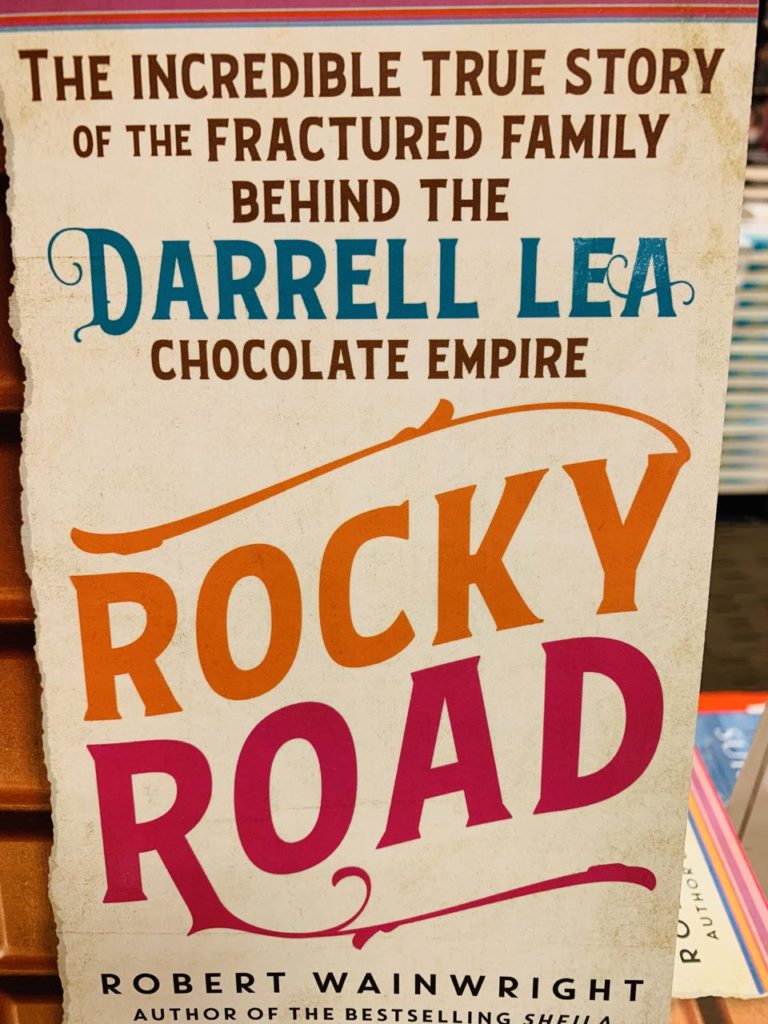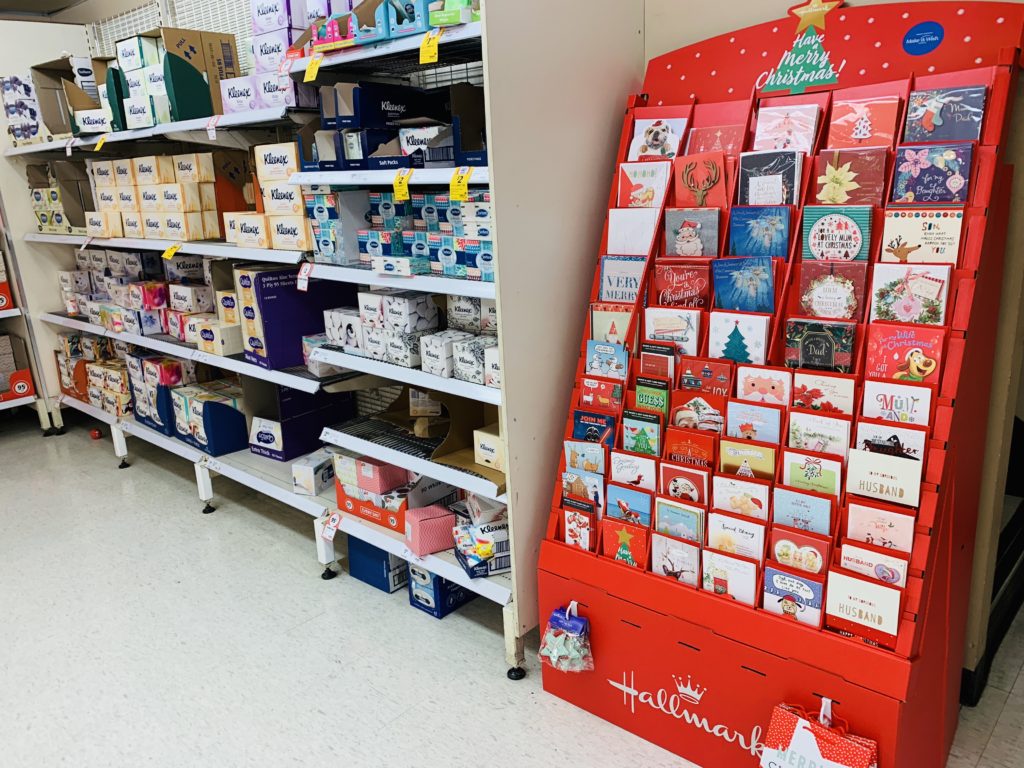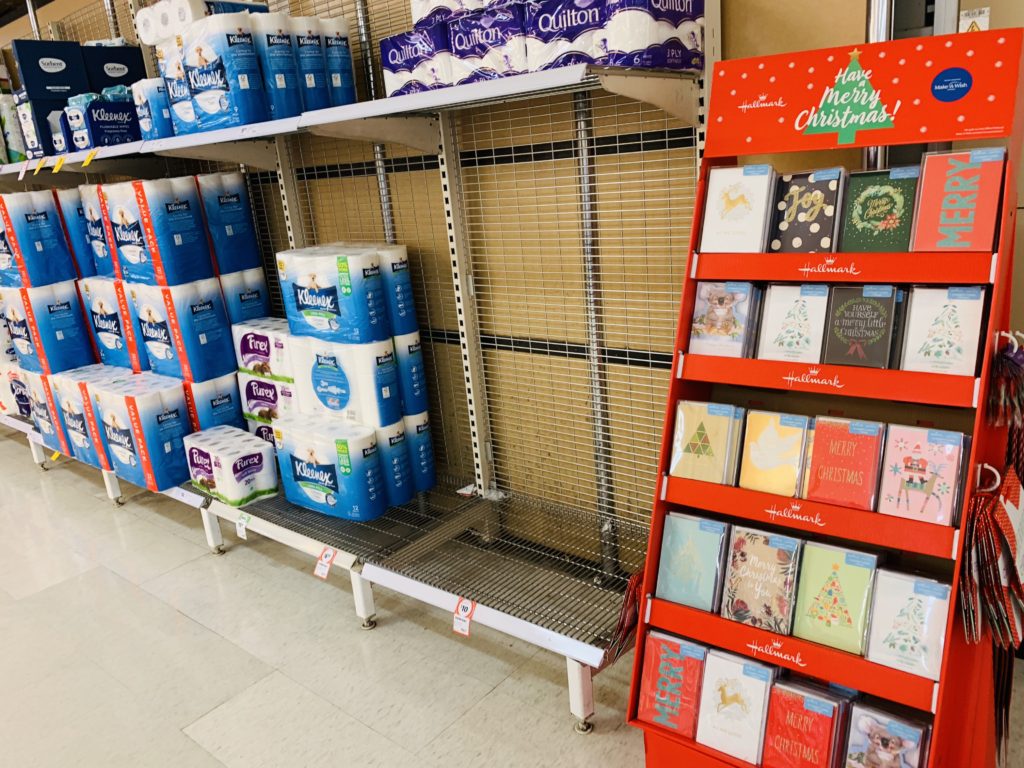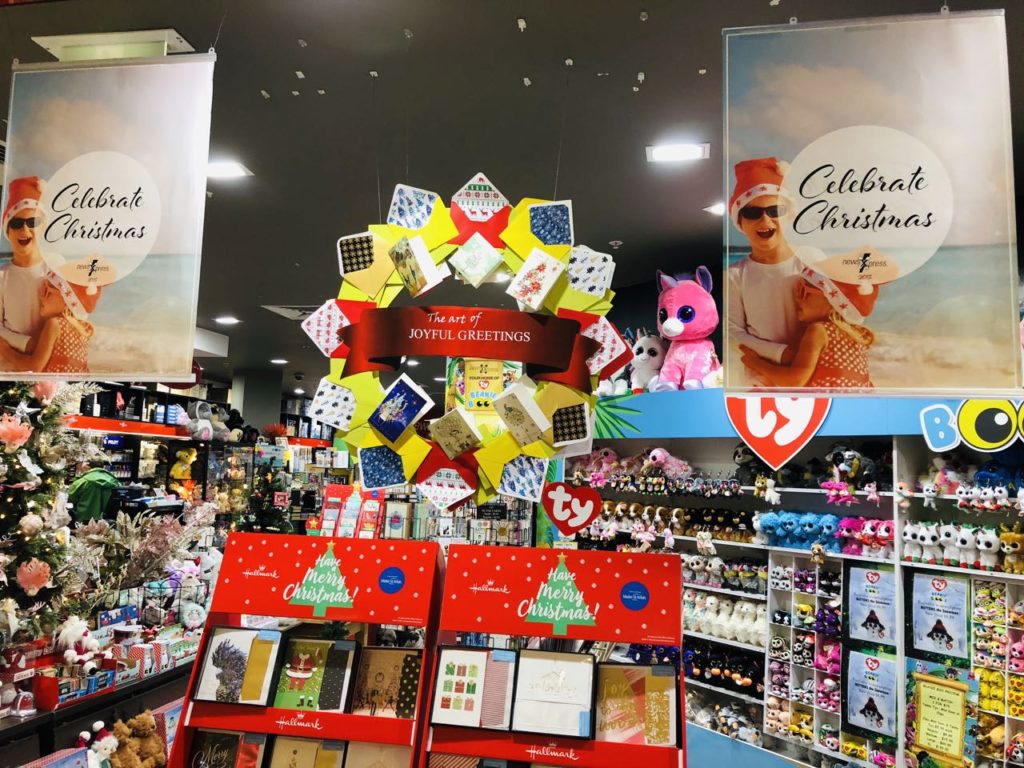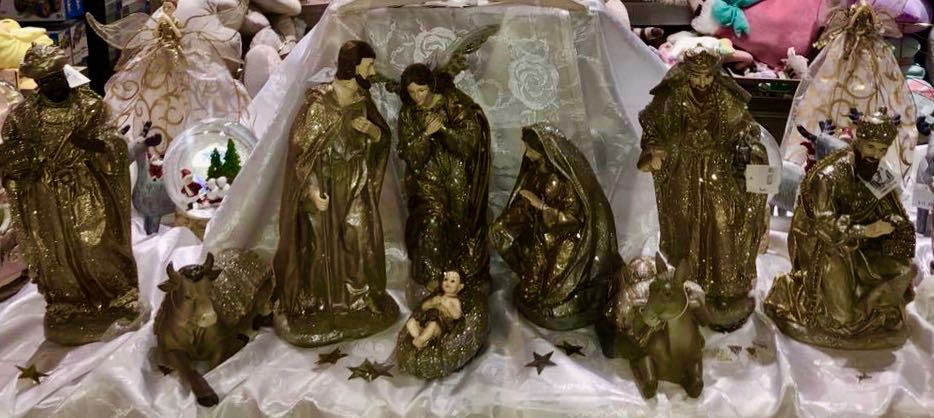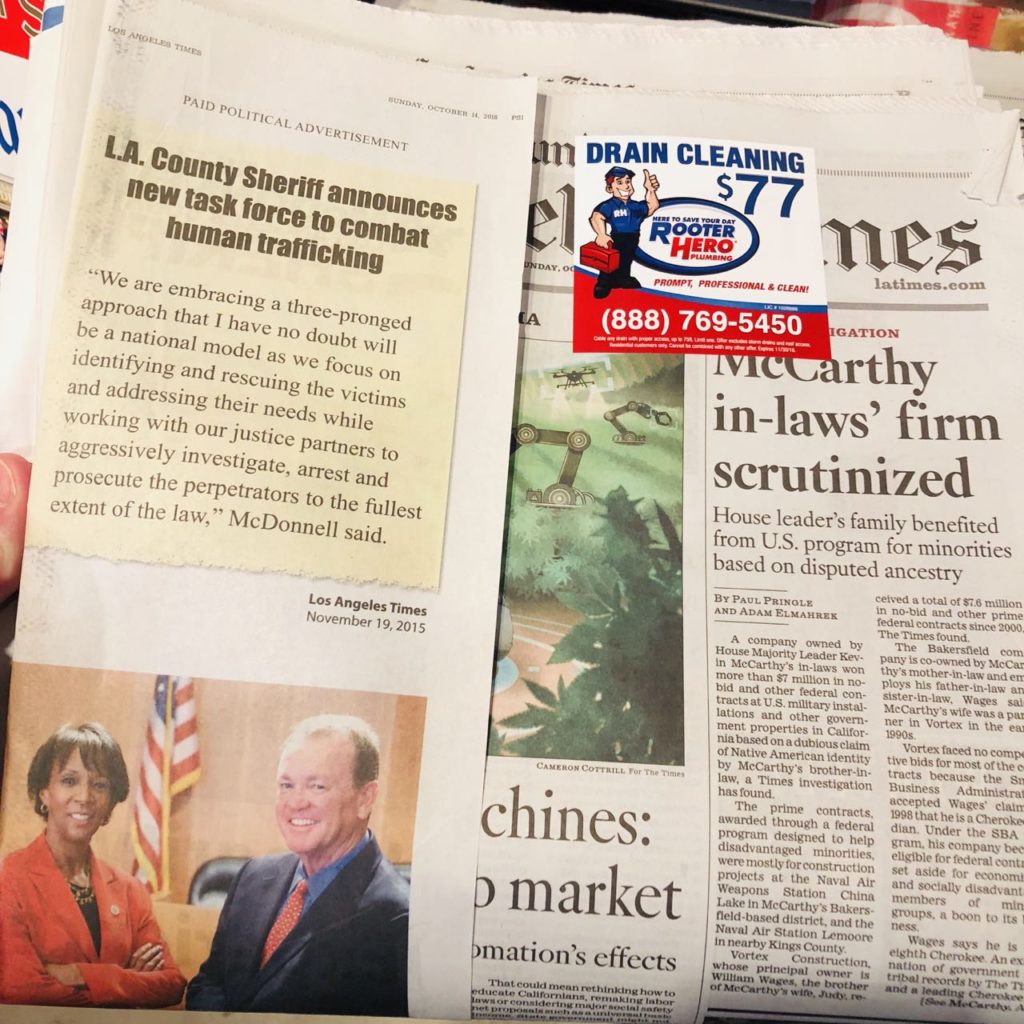Leveraging behind the counter in the newsagency
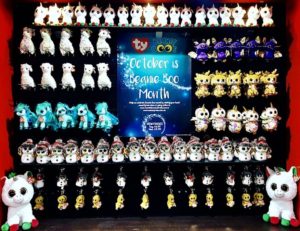 We like to keep behind the counter clean and simple, to use it as a billboard for a promotion or seasonal theme. All through October we have done this, pitching the October is Beanie Boo Month newsXpress promotion, which has been on TV nationally.
We like to keep behind the counter clean and simple, to use it as a billboard for a promotion or seasonal theme. All through October we have done this, pitching the October is Beanie Boo Month newsXpress promotion, which has been on TV nationally.
As the photo shows, the display is balanced, product driven and with a clear message at the heart. We have found this works – keeping it simple with a singular focus.
Shoppers ask about the product and purchase from what is on display. We notice people looking at the display as they wait to be served or are being served. This is why simple is best, we don’t have much time in this situation.
This behind the counter wall is best used for easily understood and purchased items, items people will happily add to their basket at the last minute.
I think it is best to have only one product or one category represented in the behind the counter display. Mixing it up with multiple product categories can be confusing and leave shoppers not noticing your pitch.
The critical thing is that your behind the counter space works commercially for you. If it is not, change it until you find a mix and display approach that works. And once you find that, try and copy it, learning each time.
Having a behind the counter focus is another small step strategy that can add value to the business. While you won’t retire on the proceeds, it is a piece in the puzzle of growth.
Is the Kikki-k card pitch good value?
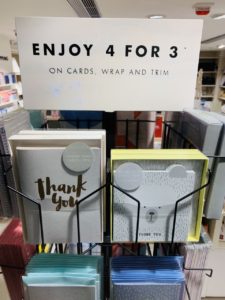 While Kikki-k has always priced cards to appear to offer a discount, the buy 3 get 4 pitch feels new. I can’t recall seeing it before.
While Kikki-k has always priced cards to appear to offer a discount, the buy 3 get 4 pitch feels new. I can’t recall seeing it before.
Of course, since they make what they sell, it is easy for them to pitch, especially so for the low cost product.
As as informed shopper, these cards are not cheap. However, I suspect most shoppers would not see it that way, they would see the p[itch as a good deal.
In my opinion, Kikki-k is like Typo, expensive, even when they do deals and run sales, very expensive for the quality of the products. That aside, they make a successful pitch, especially in the card space. Their approach at perpetual basket depth chasing offers is like what we see from the major magazine companies, especially at transit locations.
I suspect we will see more of this pricing model in our channel, too, as we deal with these nationally run competitors.
Why is it called a “newsagent poster”?
Reporting of the Geoffrey Rush defamation action against Nationwide News (News Corp) regularly refers to a newsagent poster:
Mr Rush, 67, is suing the Telegraph‘s publisher Nationwide News for defamation over two news stories and a newsagent poster alleging “inappropriate behaviour” towards a female cast member during a 2015-16 production of King Lear. Mr Rush, who performed the lead role, has vehemently denied the claims.
While the poster in question was provided by News to newsagents, I’d not call it a newsagent poster as in the usual course of business it would have been provided to retail businesses that do not identify as newsagents.
Learning from Christmas card placement at Coles
It is interesting to see placement of Christmas cards in Coles supermarkets as moves they make are thought-out, tested and made in pursuit of a revenue goal.
This photos shows one display unit of single cards placed next to tissues. Tissues are common in the weekly shopping basket I am told.
This photo shows placement of a display unit of boxed cards next to toilet paper. Toilet paper is a popular supermarket purchase.
Both photos are from he sale Coles, taken yesterday. I checked one other Coles a suburb away and found similar placements for these products.
For any retailer to achieve better results from Christmas cards this year compared to last year we need, in addition to better products, better in-store engagement and a key factor in this is our placement. In fact, I think with the same or similar cards to last year in fresh and more tactical locations could / should drive a better result.
Coles has evolved its card placement / engagement in the last year. They are more engaged with the category than before. I expect sales are up as a result.
Part of the challenge in the traditional newsagency is that cards are only in the permanent card department. That is a mistake as it only serves the destination card shopper.
What newsagents do is up to them. For me, we are playing with locations. Already, boxed cards are doing very well.
Fun content matters on social media
Sometimes, the best social media posts are those that are just because. You know what I mean, a fun image just because it is fun or a cute video you share just because it is cute. Posts do not need to have any commercial focus or intent, and often commercial benefits can flow.
This video is a good example of just because social media content.
Evolving the Halloween offer is key to success
 Halloween continues to change for us. Whereas ten years ago it was all about cheap plastic pumpkin buckets, cobwebs and plastic fang teeth, today it is about for artistic and higher-priced items such as party centrepieces and home decor items. The change is focus reflects a focus on Halloween parties rather than trick or treating.
Halloween continues to change for us. Whereas ten years ago it was all about cheap plastic pumpkin buckets, cobwebs and plastic fang teeth, today it is about for artistic and higher-priced items such as party centrepieces and home decor items. The change is focus reflects a focus on Halloween parties rather than trick or treating.
The shift in focus happened a few years ago because of supermarkets and discount variety stores buying the same product we had been stocking, some from the same suppliers, and slashing margin to change volume.
We decided they could have that space when we realised they would stay there and not touch home decor and party host opportunities.
We target product price points at $20.00 and above. The best items are those at $500.00. I recall once we bought in a $750.00 item as a display feature that we did not expect to sell … and we sold it in two days.
We change the product mix every year, usually purchasing at a modest volume so that we can tell an evolving story rather than people looking and thinking were are doing products this year that we did last year as that is retail death.
Halloween is a good season for an evolving newsagency. It’s a fun reset prior to Christmas and something good to come out of Father’s Day with.
Promoting the joyfulness of sending Christmas cards
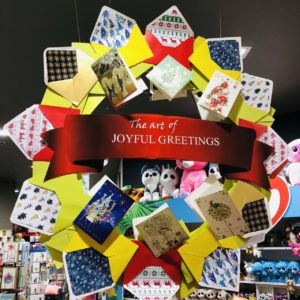 This handmade in the shop wreath featuring Christmas cards is getting comments from shoppers. It is also attracting people to the shop to see it and the products it is helping to promote.
This handmade in the shop wreath featuring Christmas cards is getting comments from shoppers. It is also attracting people to the shop to see it and the products it is helping to promote.
It is bright, unique and celebratory. It is unlike any other card or Christmas-themed collateral in Australia right now.
The wreath sits as a centrepiece, above some of our boxed cards.
Being double sided, the wreath pitches to shoppers outside the business as well as those inside.
What I like about the wreath is that it pitches joyful greetings. I think that is a terrific Christmas pitch without being over the top.
I also like that it was made in the shop and features cards we have available for purchase.
You know you have a winner when a competitor comes and takes close up photos.
I first saw a wreath like this in the US a week ago in several outlets of a card and gift chain that has no connection with Australia. That one was one sided and did not contain some of the elements of this wreath. So, leveraging the US idea, we added our own touches and created something that pops beautifully, something that is unique in Australia.
A how-to guide was created for newsXpress members to create the wreath locally. This includes step by step photos and advice on the physical assembly as well as advice on how to make the card envelopes visually pop.
Looking at boxed and single Christmas card sales for October, we are ahead of this time last year, which was ahead of the year before. We are thrilled with the double-digit growth.
All card retailers need to engage with the category beyond keeping pockets full. We need to encourage people to buy and send cards, we need to remind people of the emotional connection as well as of the value of the memories when cards are looked at down the track.
Australians by less than half the cards per capita than people in the UK do and around 25% less than people in the US do. We, along with suppliers, need to grow engagement, we need new card shoppers and we need card shoppers spending more.
I think one way to do this is to appeal to the emotion of the giving. There is no downside for retailers in pursuing this.
This wreath is a small part of a much bigger strategy that focusses on growing card sales by converting people to card buyers and providing them an in-store experience that guides a deeper basked purchase from the category.
Newsagents quitting newspapers
Another newsagent let me know yesterday that they are quitting newspapers. They are in a suburban shopping centre and sell 50 or less papers a day. As a sub agent, they make around 25 cents a paper.
Their decision has been brought on because of a dispute with the distribution newsagent. That was over withdrawal of services previously provided by the newsagent – returns pickup.
The dispute caused the retailer to look at numbers and at what else is purchased by the newspaper shopper and, over a month, how often newspaper shoppers returned for other purchases.
The data gathered shows that in their situation, less tham 5% of newspaper customers bought anything else in the paper purchase visit and none returned to purchase at any other time, separately.
The shop is well laid out with current gift and other offerings and compelling displays for impulse purchase.
On the evidence and considering the stress of the relationship, they made the decision. That is six retail newsagents I know of this year who have made the decision.
I am not writing here as advocacy. rather, I am noting what some are doing, and in doing this they are ahead of newspaper publishers in terms of the commercial value of a declining product. This is a KEY POINT of this post. Daily newspapers in Australia will close. Newsagents quitting the category are exercising more control over their own businesses.
The criteria for such a decision is, in my opinion:
- Return on floorspace.
- Customer value in the paper purchase visit transaction.
- Customer value over the long term outside the paper purchase transaction.
- The preferred identity of the business. For example, are papers a service that it is good for the business to offer?
- The ease of the supply relationship.
- Whether the print product fits the strategic direction of the retail business.
I am at the point of considering this decision in one of my businesses. It has been under consideration for a few months, I think we are ready to make a decision.
Embracing the Harry and Meghan one-shot
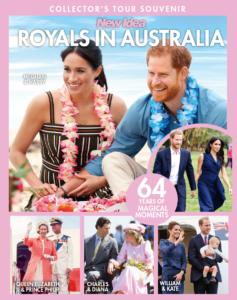 We are all set for the New Idea Harry and Meghan one-shot from Pacific Magazines that goes on sale in the morning. We plan a counter and front of store pitch from early in the morning to make the most of the early sales opportunity as Coles, our main competitor, is usually slow with magazines. With the regional royal tour still underway, there is a terrific opportunity for good sales with this.
We are all set for the New Idea Harry and Meghan one-shot from Pacific Magazines that goes on sale in the morning. We plan a counter and front of store pitch from early in the morning to make the most of the early sales opportunity as Coles, our main competitor, is usually slow with magazines. With the regional royal tour still underway, there is a terrific opportunity for good sales with this.
I urge everyone to give this title a red hot go, early in the sales cycle.
The latest Toy sales results show the value of this category
Australian toy sales data collated confidentially for the Australian Toy Association, retailers and suppliers, provide valuable insights into performant and trends. The regular reports are a wonderful insight for people fortunate to have access to the data.
The toy category is strong and valuable to retailers engaged with it. 2018 is proving to be a terrific year in this category for retailers that manage the category to success. By this, I mean retailers who buy what sells and replenish with what sells.
This is on my mind today because of a conversation with a retailer over the weekend who did well with a toy range, replaced it with another toy range that did not work and therefore feels that toys are not tight for their business. Their mistake was that they did not replenish with what was successful.
Let’s look at the performance data in some detail. $1,200 worth of inventory at wholesale moved in six weeks. It was their first play in toys. They did not replace the licenced range from within that range. Instead, they went with a new range, but still in the toy space.
Ignoring the excellent good news from their first crack at toys, they decided to quit toys altogether based on the second experience.
Had the buyer in the business purchased inventory based on what was selling, by now they would be on their further or fifth order as the licence remains very popular.
Toys are strong. However, you need to buy well, buy to trends and replenish based on your success data.
But back to the latest ATA sales data, here are some takeaways at a headline level:
- Toys are strong.
- Challenges for some majors are helping independents.
- Average pricing is holding up.
- Building Sets/CONSTRUCTION trending upwards.
- Plush continues strong with terrific results.
- Harry Potter licence is strong and delivering growth.
- LOL Surprise continues growth.
- PAW PATROL licence continues build.
I’d also note that for newsagents, toys are a net new traffic driver. They work front of store, in their own department and at the counter for easy impulse purchase.
If I look at my own situation, in one of my stores toys account for over 30% of revenue with GP sitting at above 50%. Our buying is data driven and our out of store marketing is not newsagency related.
2018: the year of poo
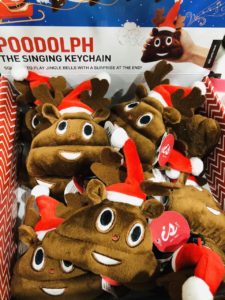 There is no slowdown to the sale of poo in the newsagency. What started as an emoji on digital platforms, is now in games, toys, plush, squishies, cards, books, candy, posters, badges, more…
There is no slowdown to the sale of poo in the newsagency. What started as an emoji on digital platforms, is now in games, toys, plush, squishies, cards, books, candy, posters, badges, more…
Poo has broad demographic appeal and is represented in a mix of suppliers.
While we have poo products mixed in a range of categories in the business, there is enough product to bring it all together in its own category. Yes, I am serious.
What is interesting to me is that I thought the interest in poo products would have passed by now. We have seen products available for a few years. That it is part of Christmas 2018 and the extent to which products are available is unexpected. That said, we are working to make the most of the opportunity.
Retail today is all about being opportunistic, jumping on products and categories that have a social media play or connection and leveraging this for maximum benefit. Poo fits that.
Now, to round out the interest, we need a poo magazine or one-shot.
Frustration at advertising inserts in newspapers
While this related to a Uk newspaper, it is interesting seeing a newspaper customer taker to Twitter to complain about the bloating of the paper with ad inserts…
0.35kg of inserts (AKA “crap”) in today’s @thesundaytimes, all now in the paper recycling bag. And no, I’m not interested in the online version, £2.70 a week is about my limit & I get exercise walking to and from the newsagents pic.twitter.com/s8YmexTsxr
— Kim Jones (@kim_cm1) October 21, 2018
Lottoland noise continues
 Lottoland continues to pitch regularly on TV and by email. Their latest pitch is around the $2.2B prize. I know retailers who are frustrated that the legislation did not force an immediate shutdown of these pitches from Lottoland.
Lottoland continues to pitch regularly on TV and by email. Their latest pitch is around the $2.2B prize. I know retailers who are frustrated that the legislation did not force an immediate shutdown of these pitches from Lottoland.
There appears to have been no slow down in their operation – based on TVC airings and emails being sent.
I suspect each Lottoland pitch gets more people signed up and that has to be the core goal of the company – account openings.
 Their email on the weekend also pitched a syndicate offer with a discount. It that it targets growing their reach through a familiar type of product. Lottoland is not showing signs of leaving any time soon and while their ads no longer mock newsagents, their pitch makes playing lotteries online look appealing … and that is the biggest challenge to retailers.
Their email on the weekend also pitched a syndicate offer with a discount. It that it targets growing their reach through a familiar type of product. Lottoland is not showing signs of leaving any time soon and while their ads no longer mock newsagents, their pitch makes playing lotteries online look appealing … and that is the biggest challenge to retailers.
Make sure your Better Homes and Gardens Christmas unit is well placed
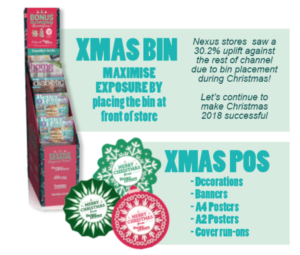 There is proof that front of newsagency store placement of this terrific Better Homes and Gardens display unit from Pacific Magazines, which is out now, plays a key role in an engaged newsagency, achieving a 30.2% better sales result than a non engaged newsagency business.
There is proof that front of newsagency store placement of this terrific Better Homes and Gardens display unit from Pacific Magazines, which is out now, plays a key role in an engaged newsagency, achieving a 30.2% better sales result than a non engaged newsagency business.
The display unit is part of Pacific’s nexus program.
I like the unit as it is strong, small format, easily moved and pitching a product through which we can differentiate out business.
This is a magazine unit I place at the front of the shop as a traffic driver. Later in the season I move it to the counter. I also give it a run next to newspapers.
For no additional capital cost, this is an easy way to add margin dollars to a basket.
Smart Aldi campaign on loyalty points reinforces newsagency loyalty pitch
I like the Aldi campaign on TV at the moment about loyalty programs and, specifically, points. I like it because it reflects my view, that points programs are often confusing and the points themselves, worthless. Here is the ad in case you have not seen it.
It is typical Aldi: fun and direct, unambiguous.
Regulars here will know more preference for discount vouchers, immediate rewards, real rewards, over points based loyalty. I switched from a magazine club card in my newsagency – buy 11 magazines and get your 12th for free (up to the value of $10) – in February 2013. It has been a ripper of a success.
While POS software and newsagency software from the software company I own offers a terrific points based loyalty program as well as integration with FlyBys and other third-party loyalty offers, it is discount vouchers that many of the 3,500+ small businesses using the software rave about.
Discount vouchers are not like pointless points based programs depicted and mocked in the Aldi TVC. A discount voucher is a real cash amount off your next purchase, off the usual purchase price. Given that the price of many items in newsagency businesses are standardised nationally, the discount is real, it is trusted.
The Aldi ad makes the point that genuinely better prices are more useful and valuable than pointless points. The experience in my own shops is testament to that. People like the ease of the program, the real discount, that there is no cumbersome process, that they understand it and that it is authentic.
Through lever settings in the software, retailers control the value of discount accrued, what it can be redeemed on and the shelf-life of the discount. This helps us ensure that the discount voucher operates as a genuine revenue driver, delivering considerably more benefit than cost. There is excellent reporting on shopper behaviour, which feeds into adjustments of the levers to maximise the benefit for the business.
This brings me bask to the new Aldi TV commercial. Their pitch is differentiating. While their main competitors, Cokes and Woolworths, each pitch points-based programs that are complex and offer little in real value, Aldi says it is every day price that matters. I think that is a message that will resonate. I say that based on shopper feedback for the discount vouchers, we have shoppers who say they have switched because of the value they get. That started in 2013 and we continue to hear it today.
I put our above average performance in core categories like cards and magazines down to discount vouchers. Data reflect this as I can see where voucher value is accused and where it is spent. magazines, in particular, benefit.
The more we differentiate our businesses from competitors the better.
High-value nativity set sales in the newsagency
We put this beautiful nativity set out today, in the window, priced at $279.99.
Within two hours we sold two. A couple of hours later, we sold a third. We have ordered more given that it is early in the Christmas season. We have been able to keep a set in the window until the new stock arrives in the next couple of days. This is important as it draws people to the shop.
I hear often from newsagents that they cannot sell gift and seasonal items priced at more than $20 to $30. This shop where we had this success today is in middle class Australia. Plenty of nursing homes, self funded retirees and families, where money is tight. The right product in the right location can help us see what is possible.
What we discovered is that a nativity scene purchase is an emotional purchase.l Emotional purchases are less about price.
$839.97 in revenue from this one product in a couple of hours is terrific. We have banked the margin dollars before the supplier invoice is due. The margin dollars made equal more than 1,200 newspapers or more than 370 top selling weekly magazines.
The shopper for the nativity also appreciates the rosary beard, religious cards and other religious themed Christmas and everyday gift items. The attraction from a simple window display discovers a new shopper who could shop all year round, someone who would not have thought of a newsagency for this purchase.
I appreciate a nativity set at $279.99 is not for everyone. My suggestion today is challenge yourself. At the very least, think about it. Be open to a product you would never usually stock showing you what could be, showing you how the right product in the right location could bring in new traffic.
Tatts’s SyndiMate tool an opportunity for retailers
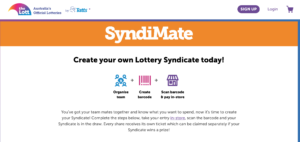 SyndiMate, launched by Tatts, supports customer-organised in-store syndicate purchases. It looks like a helpful tool for driving in-store sales.
SyndiMate, launched by Tatts, supports customer-organised in-store syndicate purchases. It looks like a helpful tool for driving in-store sales.
I’d be interested to hear what lottery retailers think. Maybe I am missing something. If not, kudos to Tatts.
Highly recommended: Press, BBC TV mini-series
Press is a six episode BBC mini-series about two rival newspapers and abut the challenges faced by publishers and, in particular, their print product. I have seen then just-aired series and highly recommend it to anyone interested in newspapers. The battle between the Post and the Herald has some resonates when thinking about News and Fairfax titles.
Here is a brief trailer for the series:
No surprise on Cosmopolitan closure
Bauer Media has announced that Cosmopolitan magazine will close. here is part of the story from Mediaweek today with more:
Bauer Media has announced the closure of Cosmopolitan Australia. The December issue will be its last.
The magazine has been published in Australia for over four decades and was a Hearst Magazines title published in Australia under licence to Bauer. Remaining Hearst titles in the Bauer stable are Harper’s Bazaar and Elle.
Cosmopolitan launched in Australia as part of what was then called Magazine Promotions, the Fairfax magazine arm. Later rebranded as Fairfax Magazines, the title moved along with most of the Fairfax’s other magazine brands to ACP Magazines.
Launch editor was Australian magazine legend Sylvia Rayner, who started the title in Australia in 1973, moving across from Woman’s Day where she was fashion editor.
Bauer Media CEO for ANZ Paul Dykzeul said this week: “It has not been an easy decision to make. However, the commercial viability of the magazine in Australia is no longer sustainable.
“Magazine closures are never easy, desirable or done without careful consideration for all of those involved. We have to ensure that we are continually reshaping and defining the business so that our readers of today, and those of tomorrow, remain engaged with the content we publish and the platforms upon which we deliver.
“We are incredibly proud of the brand and the people who have been involved and represented over the last 45 years. It has helped to launch the careers of media personalities, supported great brands and causes, and inspired millions of young women across the country.
“We would like to thank everyone who has contributed to the brand and its legacy over the years.”
Business is business. Newsagents checking their own sales data will know the titles facing similar challenges.
Cosmopolitan has been a good title. The challenge today is that this consumer is able to find satisfaction through other more visual, interactive and timely platforms. This sits at the core of challenges facing all publishers.
Do you backup your computer system every day?
By backup, I mean do you take a copy of your business to an external drive, a USB stick or some other device for safe keeping? Or, do you have a cloud backup facility whereby a perpetual offsite backup us undertaken?
Attacks on computers are increasing. These can range from a attack that corrupts data through to an attack that denies you access to the computer until you pay a ransom.
Not backing up every day is stupid. The cost of cover from this could be thousands in terms of IT expert fees or even more if you are looking to sell your business in the next year and do not have current business performance data on which to set a price.
I heard of a newsagent who paid $5,000 to recover business data from two weeks prior to when they were attacked. That could have been avoided had they followed basic backup advice.
Oh, and if you are backing up every day, have it checked to make sure you are actually backing up.
Not backing up and not checking your backups is like leaving the front door of the shop unlocked and the light on.
Will US department store troubles happen in Australia?
Turmoil in mass retail in the US continues with the filing for chapter 11 bankruptcy protection by Sears overnight. Reports say Sears will close an additional 142 stores, on top of the 33 stores already announced to close, which included 13 Kmart stores.
While there does not appear to be an obvious Australian connection, this can take time to evolve. Look at Toys R Us.
What I find interesting is that occupancy and labour costs in Australia are significantly higher. I also heard somewhere, but cannot recall where, that we have more retail space per capita than the US. Combine this information and add the growing migration of purchases to online, it makes sense that department type stores, big and small, stores that are not overly specialist, stores that struggle with a USP, these stores are vulnerable.
In some way, I think newsagency closures in Australia, around 15% this year, is for reasons similar to US department store closures.
As for Australian department stores, I look at Myer, Myer, David Jones, Big W and Target and owner which of those will be first to significantly downsize or close. I don’t include Aussie Kmart yet because they are on a streak of success right now.
I think it would be a mistake to look at the US story and say it is a US story just as it would be a mistake to look at Aussie mass retailers waiting for them to fail or trip. The reality of retail today is that every day we have to fight, be our best, specialise and make today, and every day, our payday.
Footnote: the 15% is a figure key national suppliers agreed was how we were tracking in terms of closure in 2018. I was at a workshop for newsagency channel national suppliers where this was discussed. We shared data and the 15% number was agreed, unfortunately. However, we all know what we know, and we all see what we see. The 15% in real terms is 495 shops. That is the chilling number. It concerns me that too many are sitting and watching it happen here in our own channel, and not acting themselves.
- 1
- 2

